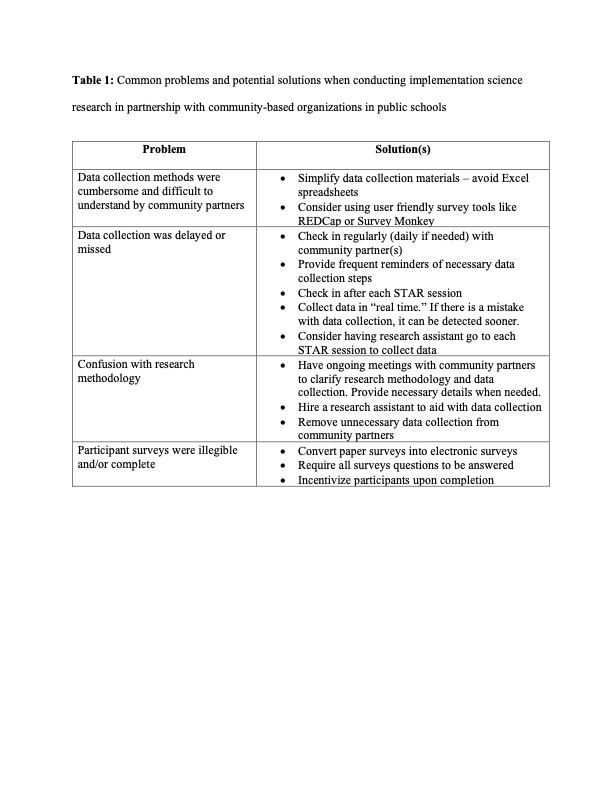Public Health & Prevention
Public Health & Prevention 2
96 - Lessons Learned from TDV Prevention Programming Implementation in Public Schools
Friday, April 28, 2023
5:15 PM - 7:15 PM ET
Poster Number: 96
Publication Number: 96.15
Publication Number: 96.15
Masha Morozov, Perelman School of Medicine at the University of Pennsylvania, Staten Island, NY, United States; Ashlee L. Murray, Perelman School of Medicine at the University of Pennsylvania, Haddon Township, NJ, United States; Marcella Nyachogo, Children's Hospital & Medical Center, Philadelphia, PA, United States

Masha Morozov, MPH (c) (they/them/theirs)
Master of Public Health Candidate
Perelman School of Medicine at the University of Pennsylvania
Staten Island, New York, United States
Presenting Author(s)
Background: Teen Dating Violence (TDV) impacts 12% of high school students in the US; but there are evidence-based prevention programs that work. Students Talking About Relationships (STAR) is a culturally adapted TDV prevention program, that was developed from Safe Dates by a community-based organization (CBO). Safe Dates actively engages students in thinking critically about TDV and teaches help-seeking behaviors. STAR builds upon the Safe Dates curriculum with specific focus on issues in students’ local communities. STAR consists of 10 student co-led, in-class sessions. Student co-teachers, known as teen ambassadors, have previously completed the STAR program. No formal evaluation has been conducted to assess STAR's impact.
Objective: To share lessons learned from: 1.) utilizing an EPIS implementation science framework for TDV prevention programming implementation in public schools and 2.) partnering with CBOs on implementation science research.
Design/Methods: In partnership with our local CBO, we utilized an EPIS (Exploration, Preparation, Implementation, Sustainment) framework to implement STAR in two Philadelphia high schools from January 2022 through June 2022. The following outcome measures were assessed: acceptability, appropriateness, effectiveness, feasibility, fidelity, and penetration. Pre-and post-participation interviews were completed with the teen ambassadors and community site champions. Interviews were conducted by our research assistant and analyzed for themes. Pre- and post-participation surveys were completed by STAR participants. Surveys were distributed on paper by CBO staff during the first and final sessions. Pre- and post-implementation fidelity and penetration checklists were completed by CBO staff. Survey data was compiled and analyzed using Microsoft Excel.
Results: 2 community site champions, 6 teen ambassadors, and 68 teen participants completed pre-participation evaluations. 2 community site champions, 5 teen ambassadors, and 36 teen participants completed post-participation evaluations. Lost to follow up was 48%. The fidelity and penetration checklists were incomplete and did not correspond to numbers reflected in our survey data. We summarize our problems and potential solutions in Table 1.
Conclusion(s): It was evident that we should have provided better research guidance to our CBO partners, especially when it came to delegating roles and responsibilities in data collection, understanding the EPIS framework, and how to best achieve both our goals. We have compiled problems and provide potential solutions to inform future TDV prevention programming implementation.

